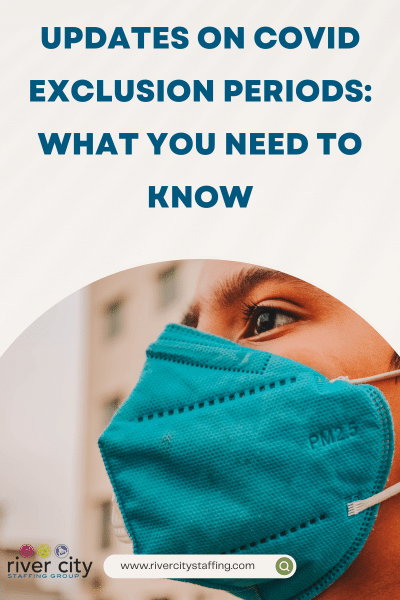The California Department of Public Health (CDPH) recently brought about some major changes to COVID exclusion periods, which came into effect on January 9, 2024. The new regulations have significantly eased the rules, departing from the previous 5-day isolation requirement after a positive COVID test.
Various COVID workplace regulations are part of Cal/OSHA’s Permanent COVID Standard that took effect on February 3, 2023, and is set to remain valid until February 3, 2025. This includes record-keeping obligations until February 3, 2026.
However, certain stipulations, such as quarantine and isolation guidelines, suggest employers follow the mandates set by the CDPH or the local health department that operates in the workplace area.
Here are some notable changes from the CDPH:
Positive COVID Cases:
For asymptomatic individuals who test positive, they are no longer mandated to be excluded from the workplace.
Those who test positive and exhibit symptoms must quarantine at home for at least 24 hours. They’re permitted to return to work if they haven’t had a fever for 24 hours without the use of fever-reducing medication and if their other COVID-19 symptoms are mild and improving.
Regardless of symptomatic display, any individuals who have tested positive should wear masks in indoor settings around others for at least 10 days. This 10-day period starts from the date of symptom onset or the date of the positive test in case of asymptomatic individuals. The mask requirement can be lifted earlier if they record two consecutive negative test results at least one day apart.
Infectious Period:
The estimated infectious period spans 2 days before symptoms onset or date of the positive test for asymptomatic individuals, and up to Day 10. This period is important to identify potential close contacts.
Individuals who have completed the isolation period as per the CDPH guidelines are not considered infectious. This implies asymptomatic employees have no infectious period. For symptomatic employees, the infectious period may vary based on when they meet the criteria to return to work.
Close Contacts:
In the event of COVID-19 symptoms surfacing after close contact, immediate testing and masking is advised.
If an individual doesn’t display COVID-19 symptoms after close contact, the CDPH still recommends testing and wearing a mask around those who are at a higher risk.
